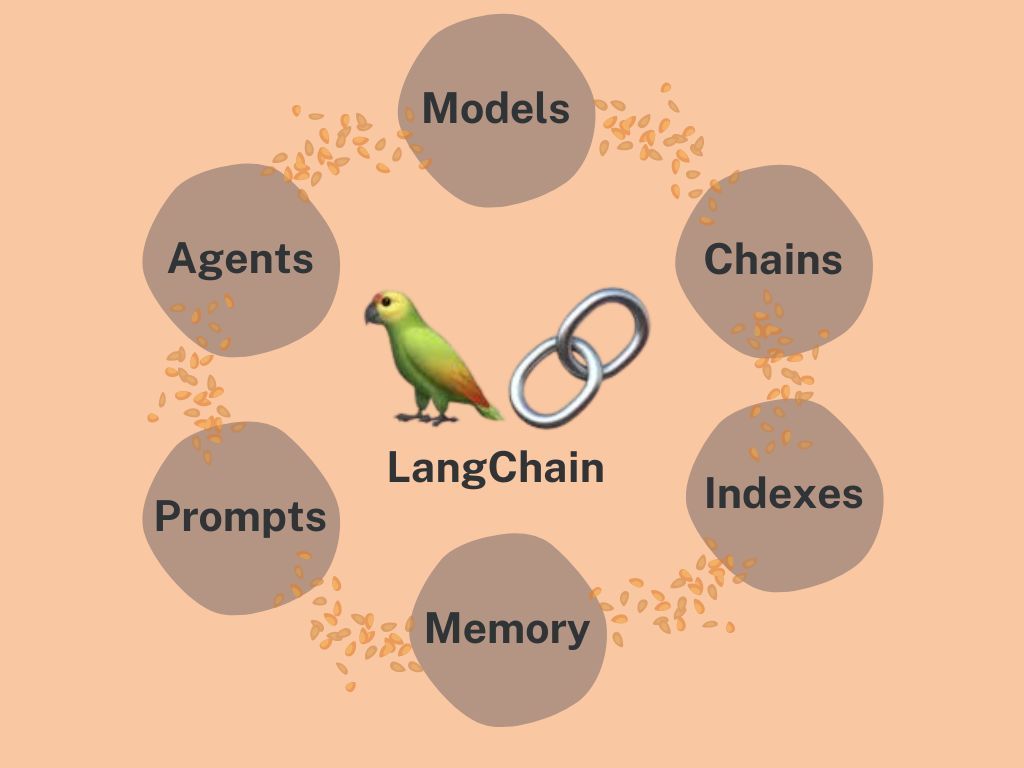LangChain for Beginners

LangChain has been appearing frequently on my LinkedIn feed lately, particularly with the recent release of a short course on DeepLearning.AI taught by Harrison Chase, its creator, along with Andrew Ng. Intrigued, I decided to research it further. Surprisingly, even ChatGPT did not know LangChain, as it is a recent invention. Harrison Chase began working on LangChain full-time in early 2023, and its popularity has skyrocketed.
It was initially launched as an open source project by Harrison Chase in October 2022 while working at the machine learning startup Robust Intelligence. Open source refers to freely available code for modification and redistribution, encouraging collaboration from developers. In April 2023, LangChain secured over $20 million in funding from Sequoia Capital, valuing the project at least $200 million, following a $10 million seed investment from Benchmark just a week earlier. It's safe to say that LangChain is a BIG Deal!
In this blog, I will share what I have learned about LangChain in a simple and accessible manner, minimizing technical speak as much as possible. Following the advice of Richard Feynman, a renowned scientist, who said, "…if you couldn't explain something clearly and simply, it was because you didn't understand it well enough". I wholeheartedly agree with this perspective, as complex topics can always be broken down into concepts everyone can comprehend.
In this blog, we will look at the following aspects:
- What is LangChain?
- Why is it Significant?
- Uses cases of LangChain
- Key Features of LangChain (for coders, aspiring coders, and interested individuals)
What is LangChain?
LangChain is a library package (a collection of pre-written code and resources) that empowers developers to create applications using large language models (LLMs) such as OpenAI's GPT. Essentially, it acts as a mediator, allowing the seamless integration of AI models with external tools and services. One common challenge AI models like GPT face is the lack of access to the most up-to-date information. But fear not! LangChain bridges this gap by connecting AI models with external data sources, enabling a smooth and intelligent flow of information. Even if one is new to coding, LangChain makes it easier than ever to leverage its capabilities and tap into the power of LLMs.
Why is LangChain Significant?
LangChain is generating significant buzz in the AI community and beyond. Here are a few key reasons for its significance:
Uniting LLM and External Data:
LangChain excels at seamlessly combining large language models like GPT-4 with external sources of data and computation. This means developers can leverage language models' vast knowledge and capabilities while integrating their data sources, whether documents, databases, or personal files. This fusion opens up a whole new world of possibilities for AI applications, allowing for personalized interactions and providing users with more relevant information.
Streamlined Development and Deployment:
Developing and deploying AI applications becomes a breeze with LangChain. Its comprehensive features, including LLM wrappers, prompt templates, indexes, chains, and agents, provide developers with a powerful toolkit (more on this later). These features enable faster prototyping, easier customization, and the creation of sophisticated AI systems without getting tangled up in technical complexities.
Democratizing AI:
Perhaps the most impactful aspect of LangChain is its role in democratizing AI. It makes complex AI technologies accessible to developers and individuals without extensive technical expertise. By doing so, LangChain fosters innovation, collaboration, and widespread adoption of AI. It brings the power of AI to a wider audience, driving advancements across industries and empowering individuals to harness AI for their specific needs.
Use Cases of LangChain
LangChain has a wide range of exciting and promising applications, as its raised capital and popularity clearly indicate. Here are a few key use cases:
Personalized Assistance and Knowledge Enhancement:
- Personalized Virtual Assistants: LangChain enables virtual assistants to create customized responses by connecting to personal data sources, such as documents or user-specific information.
- Accelerated Learning and Knowledge Retention: With LangChain, learning becomes faster as it taps into extensive learning materials and provides comprehensive explanations and insights.
Data Analysis and Decision-Making:
- Advanced Data Analysis and Insights: By integrating datasets with LangChain, businesses can gain valuable insights, analyze customer information, and make data-driven decisions.
- AI-Driven Data Analytics and Science: Researchers and analysts can leverage LangChain to extract specific information from large datasets, perform data analysis tasks, and generate reports.
Natural Language Processing (NLP) Applications:
- Chatbots and Language Services: LangChain powers NLP applications like chatbots and language translation services, delivering accurate and context-aware responses.
Integration with Company-Specific Data:
- Company Data Integration: LangChain connects language models with company-specific data sources, such as customer or marketing data, to improve customer support and enhance operational processes.
Key Features of LangChain
For those with a technical inclination or an interest in the mechanics of LangChain, let's dive into the different modules that make up the LangChain package.

Prompts: This module enables the creation of interactive messages that can adapt based on your input. It leverages various language models to understand the context and provide improved responses.
Models: With this module, connecting to a wide range of language models created by different individuals becomes easy. It supports approximately 40 models, including those designed for conversational purposes and text comprehension.
Memory: The Memory module allows language models to recall previous conversations, enhancing their ability to provide better answers by considering the conversation history.
Indexes: Indexes serve as specialized tools that facilitate quick information retrieval from documents. This module offers functions to simplify document handling and connection to different databases.
Agents: In certain scenarios, language models need to follow specific instructions based on user input. Agents act as intelligent assistants that determine which instructions to utilize.
Chains: While a single language model suffices for simple tasks, more complex undertakings often require multiple models working together. Chains streamline the process of connecting different models and experts to tackle these larger challenges.
To gain a deeper understanding of LangChain, you can watch an introductory video on the subject by Patrick Loeber:
And there you have it! I hope this blog has given you a clear understanding of LangChain and its potential. It's truly a game-changing AI tool that opens up AI to non-technical individuals. With LangChain, more and more people can now enter the world of AI and explore its possibilities.

